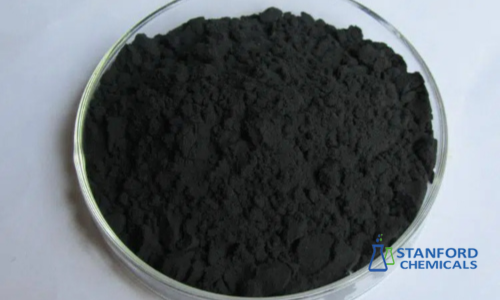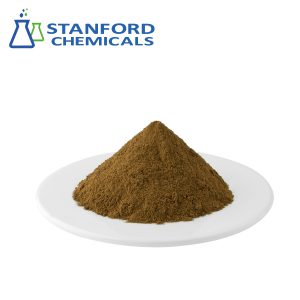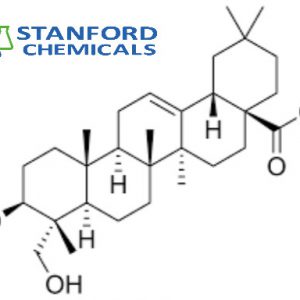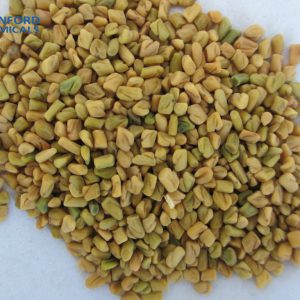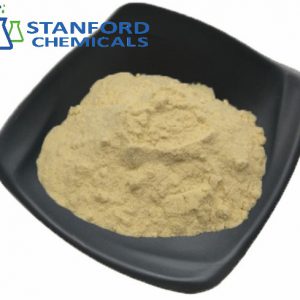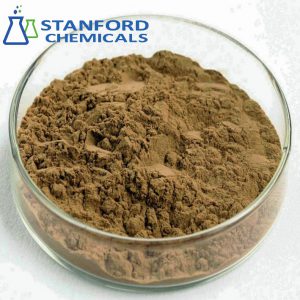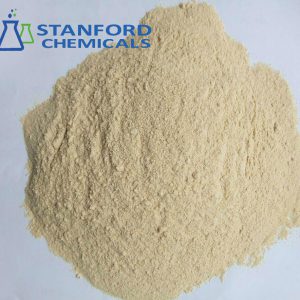- Home
- Herbal Extract
- HA9007 Hypericin Powder
HA9007 Hypericin Powder
| Parameter | Value |
| Material | Hypericin |
| Appearance | Black Crystal Powder |
| Purity | 98% |
| CAS Number | 548-04-9 |
related products: Echinacea Purpurea Extract, Bearberry Leaf Extract Powder, Loquat Leaf Extract
- Description
Description
Hypericin Powder Description
Hypericin Powder presents a dark red to violet crystalline solid form and an associated, weak aromatic odor. Hypericin Powder contains a molecular weight of 504.45 g/mol and a melting point range of decomposition of 320-325°C. Hypericin Powder gives intense absorption maxima at 545 nm and 590 nm in alcoholic solutions. Hypericin Powder is not soluble in water but extremely soluble in dimethyl sulfoxide (DMSO) with concentrations up to 50 mg/mL. Hypericin Powder exhibits fluorescence emission at 595 nm upon excitation at 590 nm. Hypericin Powder remains stable for 36 months at -20°C in amber vials under an inert atmosphere. Hypericin Powder degrades when exposed to UV light for prolonged periods or above 50°C. Hypericin Powder is of logP 5.2, which shows strong lipophilicity. Hypericin Powder reports lack of heavy metals (Pb<0.1ppm, Cd<0.05ppm) and microbial impurities (total count <100 CFU/g).
Hypericin Powder Specifications
Properties
| Property | Value |
| Material | Hypericin |
| Appearance | Black Crystal Powder |
| Purity | 98% |
| CAS No. | 548-04-9 |
| Molecular Formula | C30H16O8 |
| Molecular Weight | 504.44324 |
| Melting Point | 314~318 ℃ |
*The above product information is based on theoretical data. For specific requirements and detailed inquiries, please contact us.
Hypericin Powder Uses
- Photodynamic Therapy: Employed in oncology for targeted killing of cancer cells under visible light irradiation.
- Antiviral Research: Tested against enveloped viruses, e.g., herpes and hepatitis, in drug discovery.
- Neuropharmacology: Investigated for modulation of neurotransmitters in depression and anxiety disorder research.
- Dermatology: Formulated into topical therapeutic for psoriasis and vitiligo with regulated light exposure.
- Diagnostic Imaging: Employed as fluorescence probes for cell imaging and biodistribution studies.
Hypericin Powder FAQs
Q1. What is the rate at which the hypericin is broken down by room light?
Significant degradation in 2-4 hours; handle always under red light or complete darkness.
Q2. Why use DMSO as a solvent rather than ethanol?
DMSO offers better solubility (50mg/mL compared to 20mg/mL in ethanol) and facilitates greater cellular uptake.
Q3. Why is your powder black, not red?
Dark aggregates are crystallized by high-purity hypericin. Redissolve in DMSO to confirm red fluorescence—lack confirms degradation.

